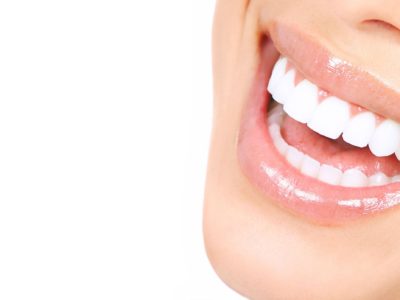Teeth Whitening Options

Teeth whitening is a great, non-invasive way to enhance your smile. There are treatments available for every budget, there are minimal risks involved, and nearly everyone who opts for a whitening solution sees improvement in their smile. Learn all about different treatment options and what happens to teeth when they are whitened.
Bleaching vs. Whitening
According to the FDA, bleaching and whitening teeth are two different things. Bleaching can only be used when teeth are whitened beyond their natural color. Whitening refers to restoring a tooth to its natural color by removing dirt and debris from the tooth. Technically speaking, any product that cleans teeth is a whitener.
Enamel
Enamel is the outermost layer of the tooth and protects the inner tooth from the trauma of chewing, gnawing, or acidic foods. Over time, the enamel breaks down and becomes transparent, which permits dentin, or the tooth’s core, to show through. A lot of the discoloration comes from dentin, which yellows with age. Through years of chewing, tiny cracks form in the enamel that collect debris and stains. Teeth whitening removes the stains and debris between the cracks, as well as penetrating the dentin to correct the yellow.
Teeth Whitening Options
Over the counter products
Over the counter products are a convenient option, but patients usually have to buy them several times to start seeing results. Store bought whitening kits come with a low concentration of bleaching gel, usually applied to the teeth in a tray, strip, or paint an applicator. Often, store bought whitening kits will only whiten the front teeth, while custom solutions will whiten the entire smile.
Professional take home kits
Professional take home kits often provide the best results over a long period of time. A patient is fitted with a custom made bleaching tray, resembling a mouthguard, that houses a low-concentration peroxide gel. The lower the concentration, the longer the gel can be applied for. The gel will remain on the teeth anywhere from an hour to overnight. Take home kits are the most economical option as well. Once a custom tray is made, patients can buy $25 whitening refills and professionally whiten their teeth at home for years to come.
In office whitening
Visiting a dental office is the most efficient and dramatic way to whiten teeth. Patients usually see a significant color change in a single appointment. The dentist protects the gums using a paint-on rubber dam and then coats the teeth in a high-concentration peroxide gel. The peroxide gel will remain on the teeth for multiple 15-20 minute intervals (usually adding up to an hour). Patients with stubborn stains may be asked to return to the office for a follow up or will be asked to continue with a home use system. Many dentists use Zoom Whitening, which uses a special light to activate the gel and break up stains and discoloration in the teeth. Like professional take home kits, custom trays are given to patients, and they can purchase refill solutions for at-home touch ups.
Risks
Although minimal, there are a few risks relating to whitening teeth.
Sensitivity
Some people will experience some sensitivity after they whiten their teeth. In most cases, the peroxide can penetrate the enamel and irritate the nerve of the tooth, but the pain is often temporary. In most cases, a patient will be able to resume treatment after waiting a few days.
Gum Irritation
Many who use a peroxide whitener will experience some degree of gum irritation due to the bleach making contact with the gums. The irritation can last for a few days but typically goes away.
Multicolored Teeth
Different teeth may respond differently to whitening treatments. Yellow teeth usually take very well to whitening, while grey or brown teeth may not respond well. Whitening will also not work on crowns, veneers, or fillings, but pre-existing dental work can be replaced to match the newly whitened teeth. Without replacements, an uneven whitening treatment can leave a patient with multi colored teeth as a final result.
Maintain Your Results
With proper care, bleached or whitened teeth can maintain a beautiful sheen. Dentists usually recommend an at-home follow up treatment after the initial in-office visit and for patients to avoid dark colored food or drink for a week after whitening. If possible, drinking staining beverages out of a straw will also help maintain a white smile.
Ready For Professional Whitening?
If you’re ready for a brilliant white smile, contact our office today to learn more about our professional whitening services.

